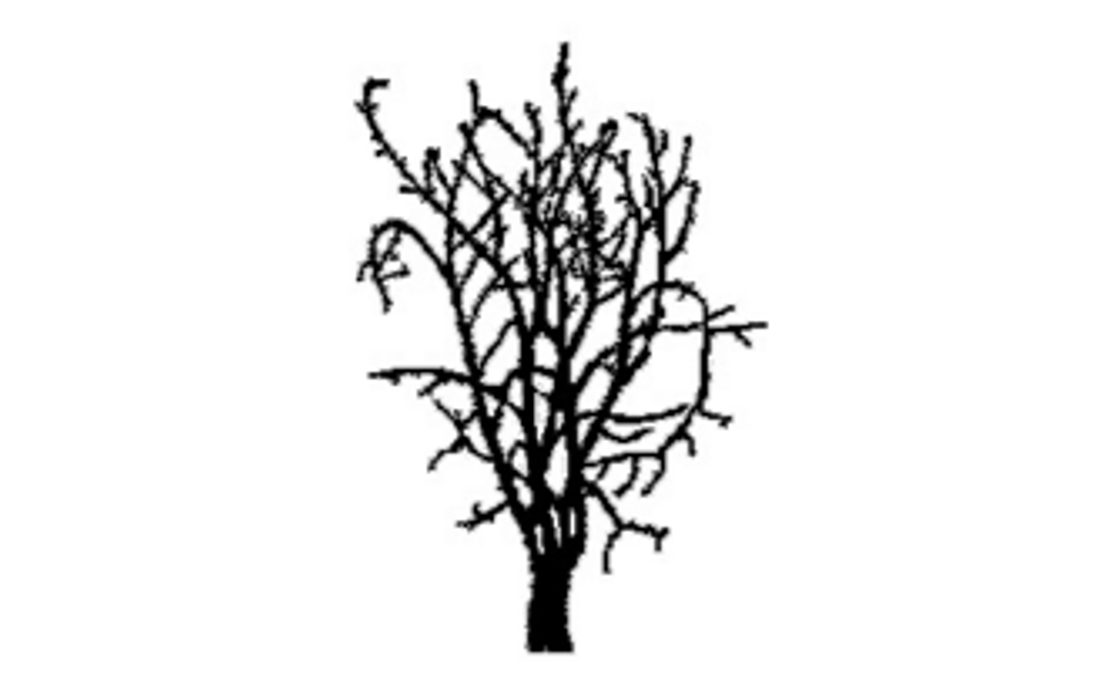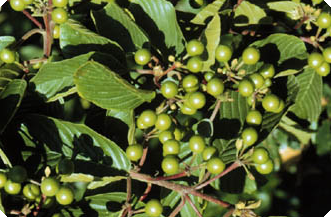Cascara sagrada
On this page
- Geographic range and ecological amplitudes
- Tolerances and damaging agents
- Silvical characteristics
- Genetics and notes
Geographic range and ecological amplitudes
Description
Cascara sagrada is an erect tall shrub, less often a small-sized (<15m tall), deciduous broad-leaved tree, at maturity with a narrow crown, slender stem, ascending branches, and smooth, dark grayish-brown, scaly bark. Cascara sagrada is not grown for timber production, but was grown for its bark, which contains a laxative of the same name. This use is reviving to some extent.
Geographic range
Geographic element: Western North American/mainly Pacific and less Cordilleran Distribution in Western North America: central and south in the Pacific region; central and south in the Cordilleran region
Ecological amplitudes
Climatic amplitude:
cool temperate - cool mesothermal
Orographic amplitude:
submontane - montane
Occurrence in biogeoclimatic zones:
(IDF), southern ICH, CDF, southern CWH
Edaphic amplitude

Range of soil moisture regimes:
(slightly dry) - fresh - moist - very moist - wet
Range of soil nutrient regimes:
(poor) - medium - rich - very rich
Tolerances and damaging agents
Root system characteristics
Cascara sagrada has a shallow root system with many lateral branches.
| Tolerance to | Tolerance class | Comments |
|---|---|---|
| low light | M | moderately shade-tolerant in warm mesothermal climates |
| frost | L | does not tolerate open-area climate |
| heat | H | frequent on warm and dry sites |
| water deficit | H | frequent on dry and warm sites |
| water surplus | H | tolerates flooding and a strongly fluctuating water table |
| nutrient (mainly N) deficiency | M | absent in acid, very poor soils; infrequent in poor soils |
| Damaging agent | Resistance class | Comments |
|---|---|---|
| snow | L | snowfall is very low in the CDF zone |
| wind | M | high winds will break boles and branches rather than uproot trees |
| Risk class | ||
|---|---|---|
| fire | L | fire-resistant, except in the early developmental stage |
| insect | L | not a serious concern |
| fungi | L | not a serious concern (root and butt rots) |
Associated tree species and successional role
In British Columbia, cascara sagrada grows very scattered on disturbed sites in early and intermediate stages of secondary succession, usually in the understory of softwoods or hardwoods. On wet sites, it may be present in late seral stages.
Genetics and notes
Notes
The largest cascara sagrada are found on very moist or wet and nitrogen-rich, coastal sites. The tea or syrup obtained from boiling the bark of cascara sagrada has been proved to be an effective laxative. The plant was also used by First Nations people as a medicine for washing sores and swellings and treating heart strain, internal strain, and biliousness.



